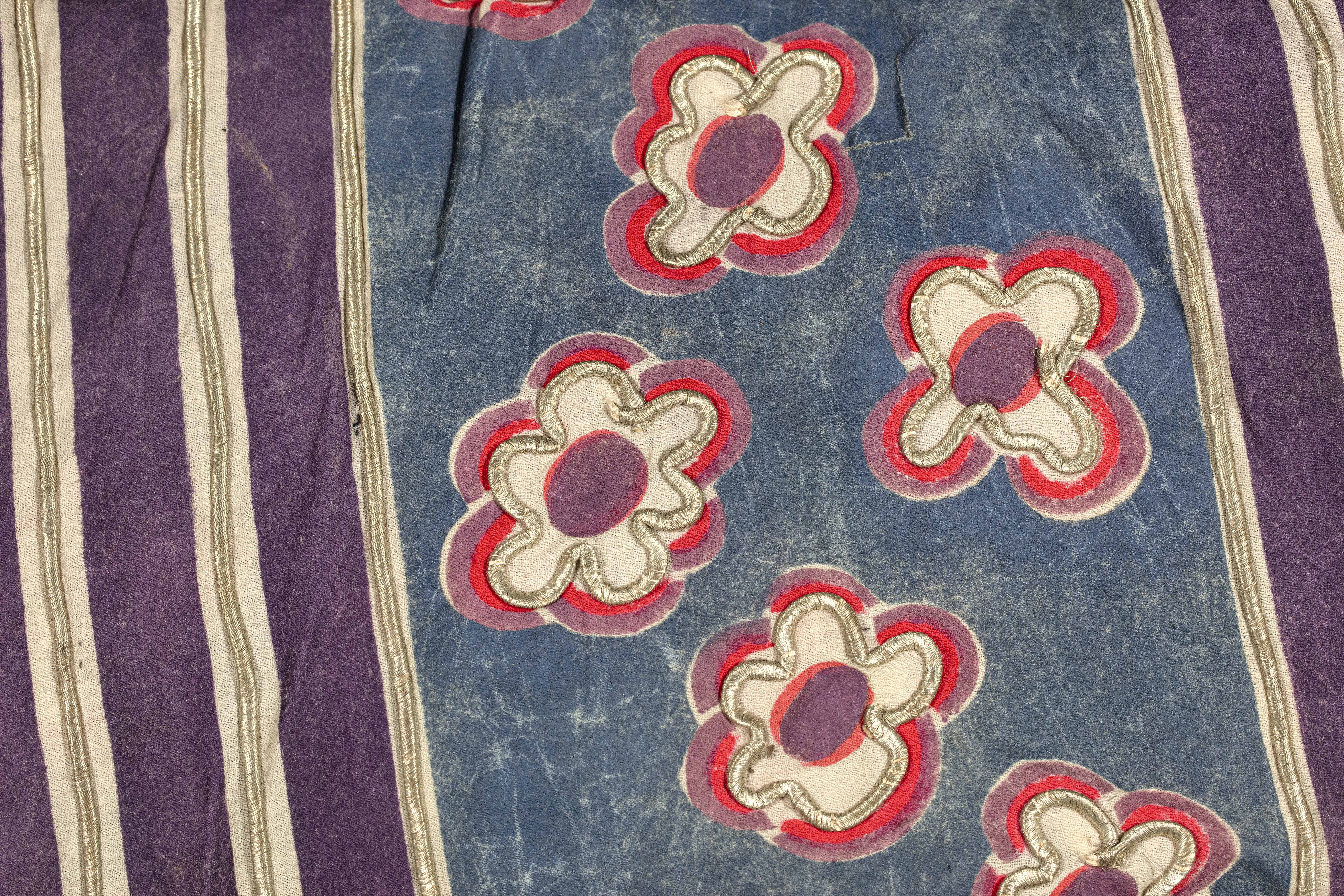The Ballets Russes was an avant-garde dance company. Founded in Russia by Sergei Diaghilev, the ballet’s first season opened in Paris in 1909 to great acclaim.
The Archives and Special Collections Centre (ASCC) holds a small collection of Ballet Russes material. The collection contains examples of individual garments, accessories and textiles. Many of the items bear the marks of nightly performance: perspiration, make-up and hasty repairs.
Before transferring to the ASCC, the collection was previously used by BA Conservation students at Camberwell College of Arts. Conservators-in-training re-housed the garments and performed much-needed remedial conservation work. Now at the Archives Centre, the collection is embedded within UAL’s teaching & learning and is a source of inspiration for students of design, fashion, curatorial practice and performance. Most recently this included a collaboration with Chelsea’s MA Curating and Collecting, where an assessed exhibition project was interrupted and re-shaped in the context of the global pandemic.
Follow us
Contact us

The collection
Early twentieth century audiences were dazzled by the experimental productions and striking costumes. Not content with repeating classical stories, Diaghilev created a repertoire of new ballets. Themes including Russian folklore, the classical world, and the Orient were all treated in the context of modernity. Under Diaghilev’s direction, ballet became a truly expressive medium.
The company’s success lay in the fusion of narrative, contemporary choreography, music, sets and design. Its creatives rebelled against 19th century stage realism to embrace vivid theatricality. Certain costumes were designed by iconic taste-makers including Coco Chanel and Pablo Picasso. With their vision, the Ballets Russes forged a new aesthetic which resonated into the wider social consciousness.


This tunic, made from silk and cotton, was designed by Russian artist Natalia Goncharova. It was worn in the ballet Aurora’s Wedding which ran for multiple seasons between 1922-1929. The above photograph shows three principal dancers performing in this tunic design. Costumiers would hand-stitch each costume and add adornments using piping, embroidery and appliqué. Textiles were painted with geometric patterns.
In theatre, the creative process does not end with the first performance - it evolves throughout the life of the production. Attributing particular garments to a single ballet can be a challenge. Designs were often re-worked as the company toured extensively through Europe, the USA and South America.

The curation
In Spring 2020 Chelsea’s MA Curating & Collections programme collaborated with the Archives and Special Collections Centre to research, interpret and mount an exhibition. This was the first time that significant parts of the collection were to be displayed publicly.
The Concealed Histories exhibition project culminated just as Covid-19 began to restrict on-site access and in-person teaching across the university. In response to the rapidly changing curatorial landscape, students responded by adopting a distributed curatorial model.
Students produced an online exhibition while working remotely. The exhibition was staged across a number of digital platforms: a dedicated website, as well as content shared on the course Instagram. Students created a number of provocations around the collection. This included published essays - which invited new readings and insight into the collection as well as the history of the ballet. MA Curating and Collections also produced podcasts, original photography and created an analogue version of the exhibition which was printed and circulated to key stakeholders.
Concealed Histories uncovered new knowledge about the collection. Students were able to identify garment designers, specific performances and on some occasions - even characters or dancer’s names. They were also able to associate individual garments together - illustrating how they would have been originally worn on stage. Seen together, this offers an incredible insight into the world of the Ballet Russes.
You can search the Ballet Russes collection online.
Contact the University Archives and Special Collections Centre for more information.
Unless otherwise stated, collection photography reproduced courtesy of MA Curating & Collections student, Seowon Nam.

